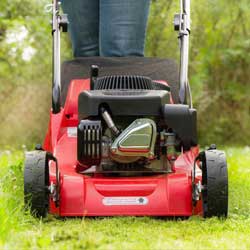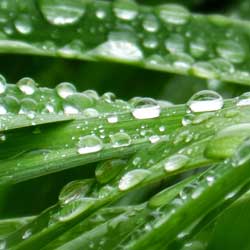If you have a lawn then you need to mow. If you need to mow then you may as well do it right, or else you risk weak, thin turf that is more susceptible to weeds, insect infestations and diseases. Fortunately, it’s easy to mow your lawn the right way!
8 Simple Steps for a Well-Mowed Lawn
- Put Your Mower to Bed in Fall
Service your lawn mower in the fall, after your last cut, so that you start the next mowing season right. For a gas mower, this means change the oil, drain the gas, replace the spark plug, change the air filter and lubricate the throttle cord. Maintenance is similar for electric and battery-powered mowers – be sure all the moving parts are properly lubricated, batteries are operating efficiently and cords are in good condition without snags, rips or bare wires. All types of mowers should have their blades sharpened in fall so they are ready for swift spring cuts. - Know How High to Cut Your Spring Grass
Before your first cut of the spring season, fill your tank with gas (or fully charge batteries) and adjust your wheel height. Cool-season grasses should generally be cut at a height of 3 to 3 ½ inches. Never remove more than 1/3 of the plant. This longer height will require that you mow more frequently but it will ensure a stronger root system, help maintain soil moisture and will greatly reduce weed competition. - Only Mow When Dry
Mowing a wet lawn is a sure way to spread disease and tear grass blades for a ragged look, plus wet clippings will clog blades and make mowers less efficient. The best time of day to mow is in the evening. Early in the morning, after the dew has dried is the second best time. Mowing in the heat of the day will cause your turf grass to go into shock. - Clear the Lawn
Before you start your mower, clear all objects from the lawn. This includes toys, lawn furniture, trash, fallen branches, stones and anything that would cause you to stop and restart the mower. Keep your eye out for anything that is a hazard, including items that may get jammed in the mower or thrown by the mower. - Keep the Clippings
Grass clippings are loaded with nitrogen, just what your lawn needs to stay healthy. Leaving the clippings on the lawn can reduce your fertilizer use by as much as 25 percent or more. Spread them out so that they don’t become anaerobic. Using a mulching mower will ensure the clippings are finely chopped and will decay more quickly, releasing their nutrition back into the lawn. - Stay Sharp
Always keep your mower blades sharp. You may need to resharpen your blades during the growing season. Unsharpened blades rip and tear at the grass. This creates an environment conducive to the spread of turf disease. Dull blades will also cut unevenly, creating a ragged look even on a newly mowed lawn. - Change Directions
Change directions each time you mow. Mowing causes the grass to lie over. Alternating your direction each time you mow will correct this problem and help strengthen your turf. You might even use multiple directions, including diagonal rows, and rotate through the pattern with each successive mowing. - Clean Up Afterwards
Dirt and debris are the main causes of lawn mower engine failure. Always take a few moments after mowing for some preventative maintenance. Grab an old rag and wipe down your mower including air vent grates, blades and wheels to be sure your mower is ready to go each time you need it.
With the proper care, preparation and techniques, you can mow your lawn the right way every time, and you’ll be amazed at the different proper mowing can make to the healthy and vigorousness of your turf.










